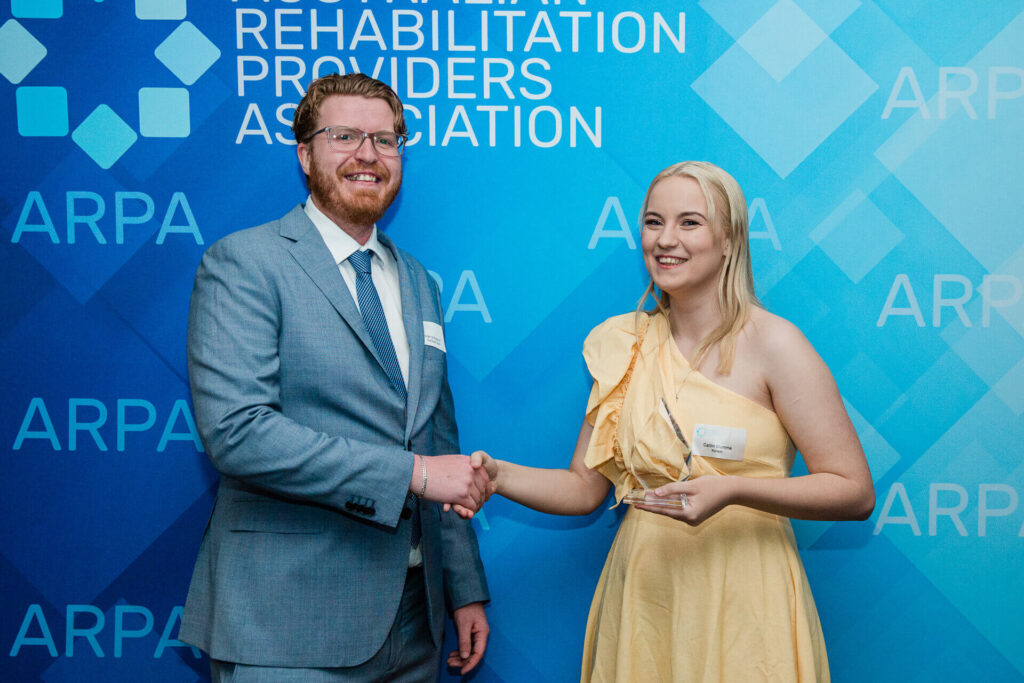Wet nose, warm heart
Dogs, along with other animals, have been scientifically proven to positively influence our mental wellbeing.
The support, friendship and ease we get from interacting with dogs is what makes them great assistance animals.
They can provide medical aid, and companionship for people living with mental health issues, disability, and chronic illness.
Types of assistance dogs
Assistance Dogs Australia defines an assistance dog as any dog that is helping a person with a disability and has met the state standards for public access rights.
They are specifically trained to provide particular health supports or tasks directly related to their owner’s disability.
In the eyes of the law, an assistance dog/animal is a medical aid, whereas a therapy/emotional support dog/animal are not specifically trained and not considered a medical aid.
The Department of Veteran’s Affairs (DVA) lists four kinds of assistance dogs:
- Guide dogs – for helping people who are blind or visually impaired live independently.
- Hearing dogs – for people who are deaf or have hearing loss, the dogs will alert the owner to certain sounds, or lead them to the source of the noise.
- Mobility dogs – assists people with mobility issues in their home by opening and closing doors and activating switches.
- Psychiatric assistance dogs – these animals are trained to recognise and respond to signs of distress and perform tasks to alleviate the symptoms.
A person using a harnessed guide dog or assistance dog is allowed entry into all public places, whereas therapy dogs do not have the same access rights.
Supporting people with disability
Assistance dogs can help people living with psychological and psychosocial conditions, such as post-traumatic stress disorder (PTSD) or anxiety, feel safe, calm, and confident when out in public spaces.
When a person of any age, experiences intense or repeated trauma they can develop PTSD, even complex-PTSD (c-PTSD).
Health Direct describe effects of this manifesting as reliving the event, being overly alert or wound up, avoiding reminders of the event, and feeling emotionally numb.
Further symptoms include low mood or depression, severe anxiety, reactivity, irritability, agitation, increased stress responses, disturbed sleep, nightmares, and disassociation.
PTSD UK highlights how assistance dogs can be trained to support their owners and improve their quality of life.
For example:
- Improved self-sufficiency by assisting with daily tasks
- Providing grounding through the dog’s consistent and positive presence
- Self-harm and repetitive motion interruptions
- Crowd control
- Guide to exit or home
- Waking their owner when they have a nightmare
- Easing symptoms of hypervigilance
- Provide tactile stimulation to help with anxiety attacks
- General social support
- Giving unconditional love
- Help stabilising intense emotions
The positive impact of companionship
Assistance dogs can have a significant impact on the wellbeing of their owner.
Whether it is pushing a crosswalk button or providing comfort after a nightmare, assistance dogs may substantially reduce a person’s caring needs.
Some other positive impacts include:
- Make independence more attainable for people living with disability – by doing specific tasks for their owners, the dog can help build their owner’s confidence and improve mobility. Dogs can even be trained to assist their owner to take medication.
- They are continually alert – assistance dogs can be trained to assist people with specific medical conditions such as epilepsy. After being alerted by their animal, they can call for help or get to a safe environment before it happens. The dogs are also trained to seek extra help or attract attention if needed.
- Companionship – assistance dogs can provide physical support and they also provide immeasurable emotional support. Assistance dogs are loyal companions, easing their owner’s feelings of loneliness and insecurity with their consistent presence in their lives. This is especially helpful for people with chronic mental health conditions.
Resources
- Assistance dogs – NDIS
- Assistance animals and the Disability Discrimination Act 1992 (Cth) – Australian Human Rights Commission
- Laws in Australia – Canine Essentials
- What is the difference between an assistance dog and an emotional support dog? – Assistance Dogs Australia
- Therapy dogs – Guide Dogs Australia
Sources
- Public access rights of an assistance dog – Assistance Dogs Australia
- Assistance dogs – Department of Veteran’s Affairs
- Post-traumatic stress disorder (PTSD) – Health Direct




